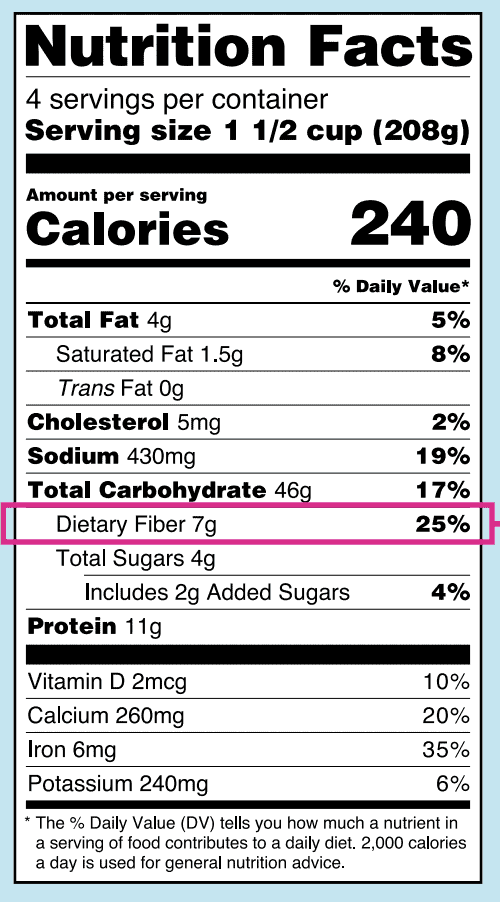Healthy Ways To Get More Fiber
Do you know how much fiber you should be eating every day? It’s no surprise that most of us don’t get enough fiber – the average person in the U.S. consumes only 12 to 15 grams per day, which equates to less than 1/3 to 1/2 of the daily amount recommended by the USDA.
But what is fiber, and why is fiber so important to our overall diet and health?
Fiber is…
| Fiber recommendation by age and sex | Age 50 or younger | Age 51 or older |
| Men | 38 grams (g) | 30 g |
| Women | 25 g | 21 g |
Fiber slows the digestion of foods, helping to maintain balanced blood sugar levels. This is known as the glycemic index (GI) and glycemic load (GL) of carbohydrate-based foods. For more information about GI and GL, see the blog post about it here (what is the glycemic index).
There are 2 types of fiber – soluble and insoluble. Most plant-based foods have a mix of both.
Soluble fiber
- Attracts water and turns into a gel during digestion.
- Can lower the risk for heart disease by binding to bad cholesterol (LDL), and increasing good cholesterol (HDL).
- Helps bind toxins and unwanted pathogens for elimination.
- Examples of good sources: beans (all types), Brussels sprouts, asparagus, broccoli.
Insoluble fiber
- Adds bulk to the stool and can aid in digestion.
- Prevents or reduces constipation.
- Examples of good sources: black-eyed peas, pinto beans, lentils, sweet potatoes, turnips, pears, apples, kale
How to Find the Fiber Content in Foods
It is best to consume both types of fiber, both soluble and insoluble, every day. This can be accomplished by eating a wide variety of vegetables, whole fruits, whole grains, beans, and legumes. Consuming the peel on some fruits and vegetables, like apples and potatoes, and eating whole fruit instead of drinking fruit juice, will also help increase your fiber intake.
Fiber can be found in many packaged foods, including whole grains, pastas, cereals, and breads. When shopping for these foods, read the item’s “Nutrition Facts” label; you will find “Dietary Fiber” listed under the “Total Carbohydrate” section of the label.

A good rule of thumb is to aim for about 5 g of fiber per serving (with a goal of no less than 3 g per serving). Also, pay attention to the “Serving size” on the label; the amounts listed under the nutrition facts are per serving.
Easy Food Swaps to Get More Fiber
| Instead of this | Try this |
| White bread | 100% whole grain or 100% whole wheat bread |
| White pasta | Whole wheat, bean, lentil, chickpea, or quinoa pasta varieties |
| White rice | Brown, black or purple rice; quinoa; barley or farro |
| Saltines/white crackers | Whole grain crackers; nut/seed crackers |
| Rice cereals | Oats, multi-grain, millet cereals |
| Fruit juice | Whole fruit; smoothies made with whole fruits & vegetables |
| Potato or corn chips | Popcorn (air-popped or plain) |
Start slow when increasing fiber in your diet. It may take some time for your body to become used to higher amounts of fiber. Start by making small changes, like making the food swaps listed above. Then you can add servings of vegetables, whole grains, and whole fruits to every meal.
Women should aim for 21 to 25 g of fiber per day, and for men, 30 to 38 g per day. Furthermore, when increasing your fiber intake, make sure you are drinking enough fluid to help the fiber pass through your digestive tract.
To summarize, adding fiber to your daily diet has many benefits, including improving removal of wastes and cholesterol, promoting feelings of fullness to prevent overeating, aiding digestion, maintaining blood sugar balance, and reducing the risk of some diseases. Speak with your registered dietitian if you would like more information, or to tailor an eating plan to better suit your specific needs.





